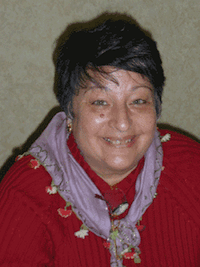Name K. Yener | ||
 | ||
Education | ||
Prof. K. Aslıhan Yener: Sacred Landscapes and Alalakh
K. Aslıhan Yener, often angicised as K. Aslihan Yener, is a Turkish American archaeologist whose work on Bronze Age tin mines in Anatolia revealed a new possible source of the important metal.
Contents
- Prof K Aslhan Yener Sacred Landscapes and Alalakh
- Education and early years
- Early research
- Bronze Age tin discoveries
- Current position and research
- References
Education and early years
Aslıhan was born in Istanbul to Turkish parents, and moved to the United States, in New Rochelle, New York at the age of six months. In 1964, she entered Adelphi University in Garden City, New York planning to study chemistry. Soon she visited her native Turkey and subsequently transferred to Robert College in Istanbul in 1966, where she studied the humanities. While studying a course in Roman ruins in Turkey, she noticed and became interested in the earlier prehistoric periods at those sites. After graduating from Robert College in 1969 she continued graduate school and majored in archaeology. She received her PhD from Columbia University in New York in 1980, and was an associate professor of history at Bosphorus University from 1980 to 1988. Aslıhan Yener is a Professor of Anatolian Archaeology in the Archaeology and History of Art Dept. at Koç University and in Near Eastern Languages and Civilizations Department at the University of Chicago, Oriental Institute.
Early research
Her first project was using chemical techniques to trace the origins of prehistoric silver objects. She found that a lot of silver had come out of mines in the Taurus Mountains in prehistoric times, and showed that mining in this region of Turkey was more extensive than previously thought.
Bronze Age tin discoveries
Next, she turned to studying the origins of Bronze Age tin because of high trace levels of tin in the polymetallic ores of Turkey. Tin was as scarce and valuable as petroleum is today in the Bronze Age. It was a vital ingredient of bronze, used with copper to make the alloy. In 1982, she found traces of tin in the Taurus Mountains. This was somewhat surprising because old Assyrian records indicated that they imported tin into Anatolia, suggesting that the area did not have a supply of its own. In turn, the Assyrians imported large quantities of tin from the east possibly Afghanistan.
Working with the Turkish Geological Research and Survey Directorate (MTA), she directed archaeometallurgy surveys in the Taurus Mountains as well as the Pontic Mountains sampling ores for lead isotope analysis. In 1987 cassiterite (tin ore) crystals in a stream in the Taurus foothills were found by the MTA geologists. Together with these teams she researched an Early Bronze Age mine called Kestel that proved to hold a tin mine. Additionally, fragments of Bronze Age pottery, charcoal for radiocarbon dating were found in and near the mine. Inside, there were veins of bright purple tin ore.
The Kestel mine has two miles (3 km) of tunnels, many of which are only about two feet wide, just large enough to allow children to do the mining work. In one abandoned shaft, a burial of twelve to fifteen children was found, presumably killed while working in the mine.
In 1989, on a hill opposite the mine, Bronze Age pottery, an estimated 50,000 ground stone tools, and evidence that this site had been continuously occupied from 3290 BC-1840 BC. A great deal of the city was semi subterranean. The pottery at the site, named Göltepe, provided the final proof of the tin industry in the Bronze Age. Many thick crucibles, lined with slag were found at the site and tests revealed the slag to have very high concentrations of tin, 30% to almost 100%. It is likely that after the ore nuggets were washed, stone tools were used to grind them to a powder, and then the powder was smelted to obtain the tin metal. All of this can be accomplished with Bronze Age tools and methods.
In 1993, Yener had found enough evidence to state that tin mining in Anatolia was, "a fully developed industry with specialization of work" by 2870 BC, around the beginning of the Bronze Age. This meant that trade in the Bronze Age was probably more complicated than had been thought, as competition for tin existed.
Current position and research
In 1993, Yener joined the Oriental Institute at the University of Chicago and remains there as the Associate Professor of Near Eastern Archaeology. Currently she is the director of the Amuq Valley Regional Projects in southern Turkey and is researching the site of Tell Atchana (ancient Alalakh), the capital city of the Kingdom of Mukish (the Amuq) during the Hittite period (Late Bronze Age c. 2000-1200 BC) and is teaching at Koç University since 2009.
